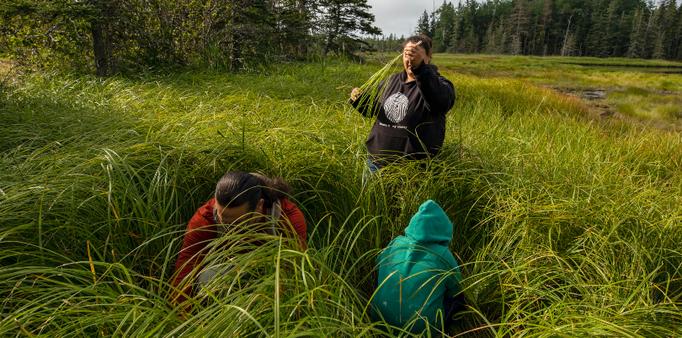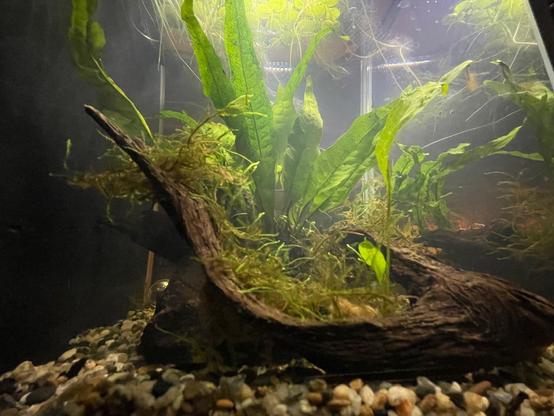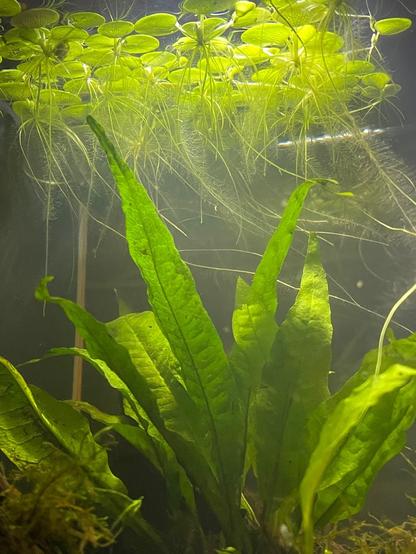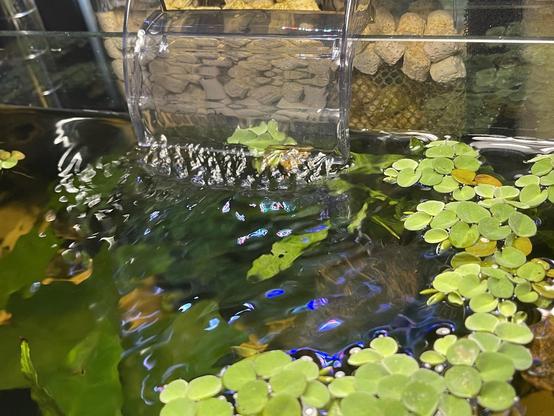Returning land to tribes is a step towards justice and #sustainability, say #Wabanaki, #EnvironmentalActivists
by Emily Weyrauch, December 1, 2020
"Last month, the Elliotsville Foundation gave back 735 acres to the #PenobscotNation, a parcel of land that connects two Penobscot-held land plots. While this return of land is a significant milestone in terms of the work of conservation groups in Maine, it also reflects a larger shift in thinking about land ownership, from property and caretaking toward #IndigenousStewardship.
"Before European settlers arrived, the land in Maine was stewarded by the Wabanaki people—a confederacy of five nations including Penobscot, #Passamaquoddy, #Maliseet, #Mikmaq and #Abenaki.
"Early treaties between Indigenous tribes and settlers were signed, but not upheld. Early Maine court cases set the precedent for #LandTheft. The state legally prohibited treaty obligations from being published in its constitution. Ever since the 1980 Maine Indian Claims Settlement Act, the state government has significantly limited tribes’ sovereignty and access to ancestral lands. Now, the Maine legislature is preparing to take up a bill that would make 22 law changes to the 1980 act to promote Wabanaki sovereignty and correct the impacts of the 40-year-old piece of legislation that placed Wabanaki people in a separate category from other federally-recognized tribes.
"Currently, a vast majority—90 percent—of land in Maine is privately owned, unlike in states like Nevada, Utah and Idaho, where the vast majority of land is owned by the U.S. government. Less than one percent of Maine land is owned by #Wabanaki people.
"To many Indigenous people, the legacy of white-led conservation groups in Maine and nationwide represents a failure of true environmental stewardship.
"'Across the country, land conservation groups and land trusts participated in depopulating, cutting off Indigenous access to certain lands and resources,' said Dr. Darren Ranco, associate professor of Anthropology and coordinator of Native American Research at the University of Maine.
"Dr. Ranco said that the history of environmental protection in the U.S. starts in the 19th century and focuses on two movements: conservation and preservation.
" 'On the one hand, you have people saying, ‘You want to use the public lands wisely’ — and that often led to extreme forms of exploitation through oil and gas contracts. The other side of it was, ‘Let’s just keep it wild and preserve it as-is, as a wild space,' " said Dr. Ranco, who is a member of the Penobscot Nation. 'Ironically, both of those approaches in the 19th century sought to displace Indigenous people.'
" 'A lot of the [conservation] practices in the past actually marginalized native people, and didn’t allow for their voice to be heard, and discouraged their voices,' said Suzanne Greenlaw, a #Maliseet forestry scientist and PhD student at the University of Maine.
" 'The native approach is very much in the center—we do harvest, but we harvest in a sustainable way that actually forms a relationship with the resource,” said Greenlaw, who conducts research on the sustainable harvesting of sweetgrass by Indigenous people.
"In fact, the way that Indigenous people understand land is markedly different from western ideas of ownership.
" 'The idea of private property puts us in this framing where the land, the water, and the air, and the animals, and everything else—all our relations—are meant to serve us, they are things below us, things to dominate and control and take ownership over,' said Lokotah Sanborn, a Penobscot activist.
" 'For us, it would be absurd to say ‘I own my grandmother,’ or ‘I own my cousin,’ or ‘I own my brother.’ You don’t talk about things like that. And so when we’re talking about land ownership, it’s that same idea —these are our relations, these are things that hold a lot of significance to us,' said Sanborn.
"While the planet’s Indigenous people make up less than five percent of the global population, they manage 25 percent of its land and support 80 percent of global biodiversity, research shows.
" 'We’ve been led down this path toward climate catastrophe and the extinction of millions of species, all to drive #ExtractiveIndustries,' said Sanborn. 'If we wish to reverse these things, we need to give land back into the hands of Indigenous peoples and to respect our ability to protect those lands,' said Sanborn.
"This growing recognition of Wabanaki #stewardship is part of the mission of First Light, a group that serves to connect Wabanaki people with conservation organizations who seek to expand Wabanaki access to land. Currently, 50 organizations are participating, including #MaineAudubon and #TheNatureConservancy.
"Lucas St. Clair, president of the Elliotsville Foundation, participated in First Light’s year-long educational program before fulfilling a request by #JohnBanks, Natural Resources Director for the Penobscot Nation, to return the 735-acre property to the Penobscot Nation. This comes four years after the foundation gave 87,500 acres of land to the federal government for the establishment of Katahdin Woods and Waters National Monument. St. Clair said the foundation currently holds 35,000 acres of land.
" 'In the grand scheme of things, this is not a lot of land,' said St. Clair, about the foundation’s recent transfer of 735 acres. 'It was more about justice, relationship-building and awareness.'
" 'You see this move toward Indigenous knowledge and practices of management and conservation that have existed for hundreds of years, and this possibility with land conservation groups and Wabanaki people having a more central role in understanding and managing the lands is coming to the fore,' said Dr. Ranco.
"And while organizations undergo the learning and transformational processes that precede giving back land, and as the legislature and courts are taking up questions of Wabanaki sovereignty and stewardship, people are working on the ground everyday to re-imagine relationships with land.
"Alivia Moore, a Penobscot community organizer with the #EasternWoodlands #Rematriation collective, said that a crucial part of the work of expanding Indigenous access to land in Maine is recognizing and restoring the history of matriarchal Indigenous societies.
" 'To restore land to Indigenous #matriarchies is to make sure that everybody has what they need on and from the earth. There’s enough for everyone,' said Moore
"With #EasternWoodlandsRematriation, Indigenous people are growing their connections to #RegenerativeFoodSystems. Whereas cultural use agreements are more formal ways Indigenous people can access resources from the private land of people and organizations, Moore said other relationships can form and strengthen even informally.
"Years ago, a white farmer offered land to Indigenous women to use for farming to restore their connection to the land. That has been an ongoing relationship that became one of mutual exchange of information and resources, shared learning and shared meals, said Moore.
"The movement to give land back to Indigenous stewardship is not confined to a single organization, legal battle, or project. For Indigenous people—and a growing number of environmental organizations—it is a step toward justice and a sustainable future.
"'Land back is not just about righting past wrongs. The point of land back is that it’s the future, if we wish to adequately address and avoid further global devastation from climate change,' said Sanborn."






